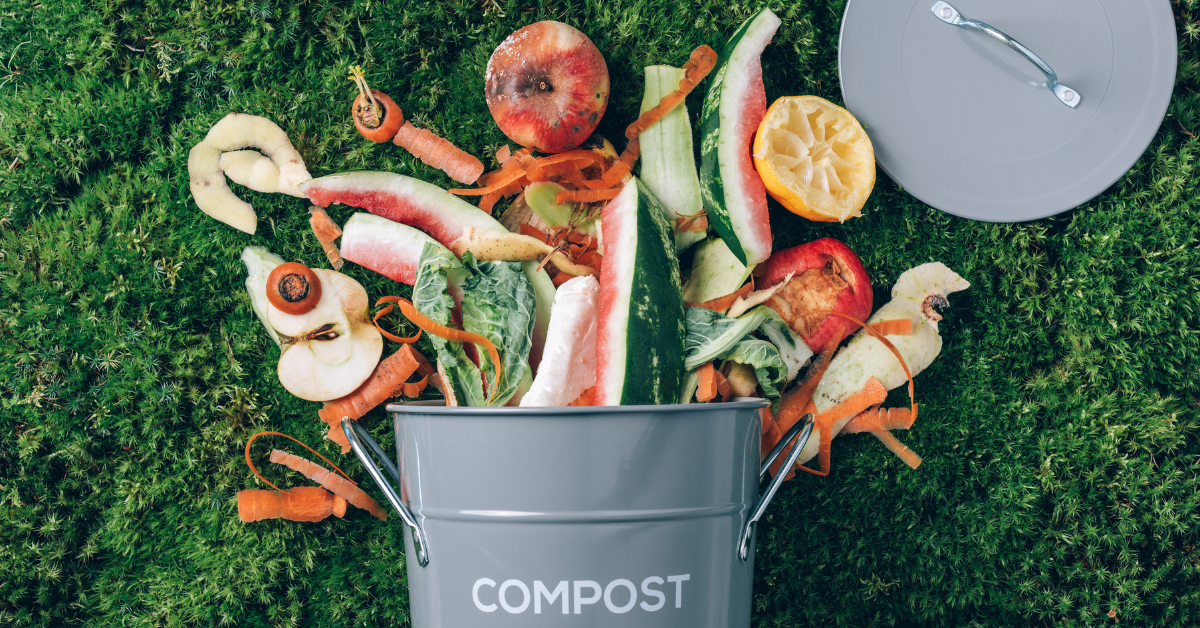A zero-waste lifestyle is a mindset shift that focuses on minimizing waste by rethinking consumption, maximizing recycling, and repurposing wherever possible. Adopting zero-waste habits can reduce your environmental impact, conserve natural resources, and contribute to a healthier planet.
Living zero-waste means taking steps to limit what you send to landfills, avoid single-use plastics, and find eco-friendly alternatives for everyday items. By reducing waste, we help to reduce pollution in oceans, landfills, and ecosystems.
For more tips on sustainable living, check out our Sustainable Living Category, where we share practical guides for eco-conscious choices.
The 5 R’s of Zero-Waste Living: Refuse, Reduce, Reuse, Recycle, Rot
The 5 R’s of Zero-Waste Living provide a simple framework to guide sustainable actions:
- Refuse: Say no to single-use plastics, junk mail, freebies, and unnecessary packaging.
- Reduce: Declutter responsibly by limiting what you bring into your life and consuming mindfully.
- Reuse: Embrace reusable products and repurpose items instead of tossing them out.
- Recycle: Recycle correctly by sorting materials like plastic, glass, and paper to minimize waste sent to landfills.
- Rot: Compost organic waste to create nutrient-rich soil and reduce landfill emissions.
Zero-Waste Kitchen Tips
The kitchen is one of the most waste-generating areas of the home, but adopting zero-waste habits here can make a big difference.
1. Food Storage
Switch to glass jars, reusable food wraps, and bulk storage containers to eliminate single-use plastic bags and cling wrap. These options keep food fresh and are easy to clean.
2. Avoiding Plastic
Bring reusable produce bags and cloth shopping bags to the store to reduce plastic waste. Bulk stores often welcome these eco-friendly alternatives.
3. Meal Planning and Food Waste Reduction
Plan your meals to avoid overbuying and use leftovers creatively to reduce food waste. For more meal-prepping ideas, see our Zero-Waste Kitchen Guide.
Use the NRDC’s Food Waste Tips for practical advice on reducing waste from food.
Zero-Waste Bathroom Essentials
The bathroom is another area where we can replace disposable items with reusable and biodegradable options.
1. Sustainable Personal Care
Consider bamboo toothbrushes, biodegradable floss, and refillable containers for products like lotion and soap. These are simple swaps that eliminate plastic waste.
2. Plastic-Free Skincare and Haircare
Shampoo bars, conditioner bars, and refillable containers for skincare products eliminate unnecessary plastic and are easy to find.
3. Eco-Friendly Alternatives
Switch from disposable razors to safety razors, and use reusable makeup pads instead of single-use cotton rounds.
For more zero-waste ideas, our Sustainable Bathroom Guide has tips on creating a greener routine.
Zero-Waste On-the-Go: Daily Essentials
Zero-waste doesn’t stop at home; taking reusable items with you can make a huge difference while out and about.
1. Reusable Items
Bring a reusable water bottle, coffee cup, utensils, and metal or bamboo straws wherever you go to reduce your reliance on single-use items.
2. Travel Kits
Pack a zero-waste travel kit with a reusable bag, stainless steel container, and cloth napkin to stay prepared for meals and snacks.
3. Avoiding Single-Use Plastics
When dining out, kindly refuse plastic utensils, straws, and napkins. Choose restaurants that offer sustainable practices.
For more on eco-friendly travel, check out Green Traveler for tips and advice.
Zero-Waste Household Cleaning
Zero-waste cleaning is all about reducing plastic packaging and toxic chemicals by switching to natural, DIY solutions.
1. Natural Cleaning Solutions
Create simple, effective cleaners with ingredients like vinegar, baking soda, and essential oils. These ingredients are multipurpose and save money over time.
2. Eco-Friendly Tools
Choose compostable sponges, wooden brushes, and washable cleaning cloths instead of single-use paper towels.
For DIY cleaning tips, explore our Natural Cleaning Guide, where we provide simple recipes for every room.
Clothing and Fashion: Sustainable Wardrobe Choices
Adopting a zero-waste mindset in fashion means prioritizing quality, durability, and ethical choices.
1. Buying Second-Hand
Thrift shopping and online resale platforms reduce the demand for new clothing production and keep clothes out of landfills.
2. Choosing Quality Over Quantity
A capsule wardrobe with versatile, durable pieces is both stylish and sustainable. Focus on timeless items that you can wear year-round.
3. Upcycling and Repairing
Learning basic repair skills allows you to extend the life of your clothing. Upcycling old garments can also refresh your wardrobe without buying new items.
External Link: Check out ThredUp for second-hand fashion options, from casual wear to designer pieces.
Zero-Waste Office and School Supplies
Switching to eco-friendly supplies at work or school can reduce unnecessary waste from paper, plastics, and other disposable materials.
1. Digital Organization
Reduce paper waste by going digital for notes, calendars, and documents. Apps like Google Keep and Evernote help keep you organized without the clutter.
2. Eco-Friendly Stationery
Look for refillable pens, recycled notebooks, and metal rulers instead of plastic ones. These small changes add up over time.
How to Get Started with Composting
Composting is one of the most impactful zero-waste practices you can adopt, converting organic waste into nutrient-rich soil for plants.
Types of Composting
Options include backyard composting, indoor compost bins, and vermicomposting (using worms). Each method has unique benefits, and many composting solutions fit small spaces, too.
Composting for Small Spaces
If you’re limited on space, try bokashi bins or indoor worm farms, which are odor-free and perfect for apartments.
For more information on composting, check out the EPA’s Guide to Composting at Home.
Building a Zero-Waste Community
Sustainable change is even more impactful when it’s shared with others. By encouraging others to adopt zero-waste habits, you help promote a larger culture of sustainability.
1. Supporting Local Zero-Waste Stores
Shopping at local stores that minimize packaging and offer bulk options supports businesses that align with zero-waste values.
2. Community Initiatives
Consider starting or joining local buy-nothing groups, swap meets, or community gardens to build a sustainable neighborhood.
3. Raising Awareness
Share zero-waste practices with friends, family, and neighbors. Hosting a zero-waste gathering or sharing resources can inspire others to make eco-friendly changes.
Conclusion: Small Steps, Big Impact
Embracing a zero-waste lifestyle doesn’t require radical changes. Start small by making a few sustainable swaps in one area of your life, like the kitchen or bathroom, and gradually expand as you go. Each small step contributes to a healthier planet and a more mindful way of living.
Explore our Sustainable Living Category for more tips on creating an eco-conscious lifestyle. Together, we can make a big impact with small changes.






















